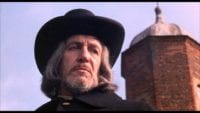Italian horror films make up a large portion of horror movie viewing hours. Masters of Italian horror cinema like Dario Argento, Lucio Fulci, and Michele Soavi’s films line the shelves of many fans’ collections. As any young child obsessed with all things horror, eventually the multiplex and Hollywood studio system just won’t offer or be enough to satisfy. Italian horror will completely expand those horizons. Films that seemed to be made by madmen themselves, Italian horror often concentrates more on style and less on narrative, making for a completely different cinematic experience. The films were often more violent, more visceral, and even felt more dangerous than the American studio horror of the mid 90s. The atmosphere, the tone, the use of colors, and the incredible scores: all of that made Italian horror essential for horror education. These are Steve Wandling’s desert island, non-negotiable favorite horror films of all time.
Suspiria (2018)

Let’s go ahead and get the most controversial film on this favorite Italian horror films list out of the way first. Oscar winner Luca Guadagnino (Call Me By Your Name) didn’t really seem like a likely fit. The original Suspiria (1977) is arguably the greatest Italian horror film of all time and the crowning jewel in Dario Argento’s body of work. The announcement of the remake left many scratching their heads and others spitting at the ground. After the release of the first trailer it was more than clear that Guadagnino’s Suspiria was going to be a completely different film. Gone were the vibrant colors of Dario Argento’s hallucinatory trip down the rabbit hole and in its place an overstuffed tale about the power of the feminine and living in the shadow of the Third Reich in 1977 Berlin.
The film is filled with ghosts figurative and literal, and may be the most feminist horror film ever made. It is stark, almost clinical, yet poetic and enchanting. The film invites the audience to be “taken over by the dance” and it certainly does take over. The film itself was a lightning rod with critics and audiences alike, with some heralding it as a masterpiece of modern horror and others dismissing Suspiria (2018), but there was no denying the intensity of the dance performances and the terrifying scene in which a young dancer is murdered. Her body possessed by another dancer without even realizing her own power, her dance takes control of the other girl, twisting, contorting, and breaking her body into a mangled, inhuman form.
Cemetery Man (1994)
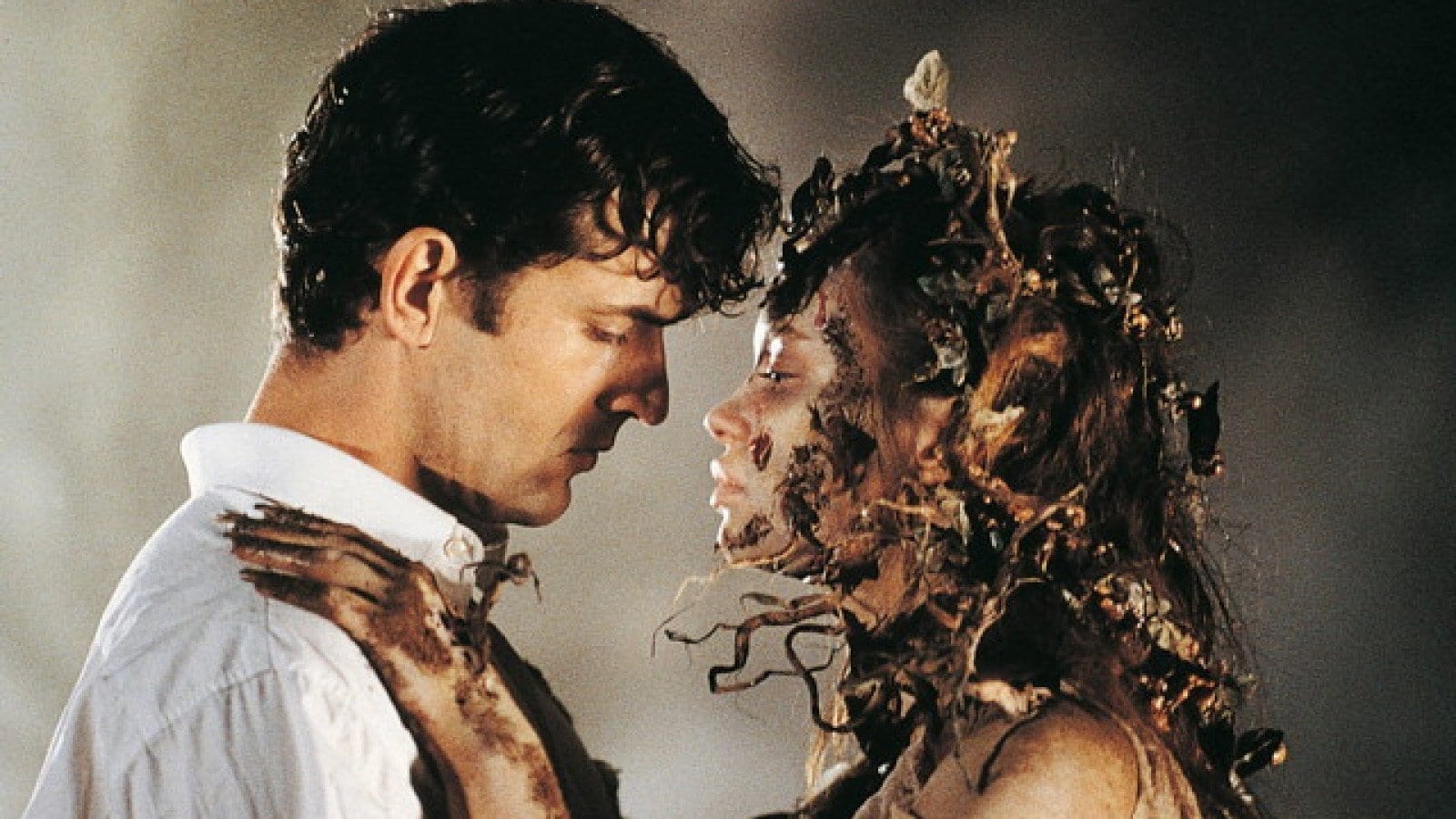
Michele Soavi (The Church) learned from the best, working for the Italian horror maestro Dario Argento on several projects before branching out into making his own films. Based loosely off of the Dylan Dog comics, Cemetery Man stars a young Rupert Everett (My Best Friend’s Wedding) in the title role. The film has a Lynchian dream-like quality to it, mixed with some of the comic sensibilities of early Peter Jackson. The infamous “snow globe” reveal ending is one that has people debating what, if anything, they saw was real.
The movie starts on somewhat solid ground: Everett’s title cemetery man is charged with keeping grounds at the local cemetery of a small Italian countryside village. Part of his duties include making sure the dead at “Resurrection Cemetery” get put back in the ground. The corpses, for reasons unknown, are coming back from the dead. As the film goes on, that premise begins to slip into a Brazil kind of fever dream where no one is really sure if they can believe what they see or rely on any characters to be remotely reliable.
Cemetery Man has an extremely surreal quality to it. Logically, it can be a tough nut to crack. Stylistically, there’s so much in it to love. The movie also has more of a light-hearted comedic tone, despite the subject matter, than most Italian horror films. Whether or not Cemetery Man makes narrative sense seems to be less important to Soavi as does how cool a particular sequence works or how sexy a moment feels.
The mayor of the village’s young daughter is murdered only to come back to life and become the disembodied girlfriend of Ollie, the cemetery man’s slow-minded companion. A young hot-rodding BMX biker is buried with his motorcycle, only to come roaring back from the dead riding it. Does Cemetery Man add up to a cohesive narrative? Not exactly. Does it matter? Not one bit. The stylish black comedy continues the Italian horror traditions that Soavi had learned well into the 1990s.
Suspiria (1977)
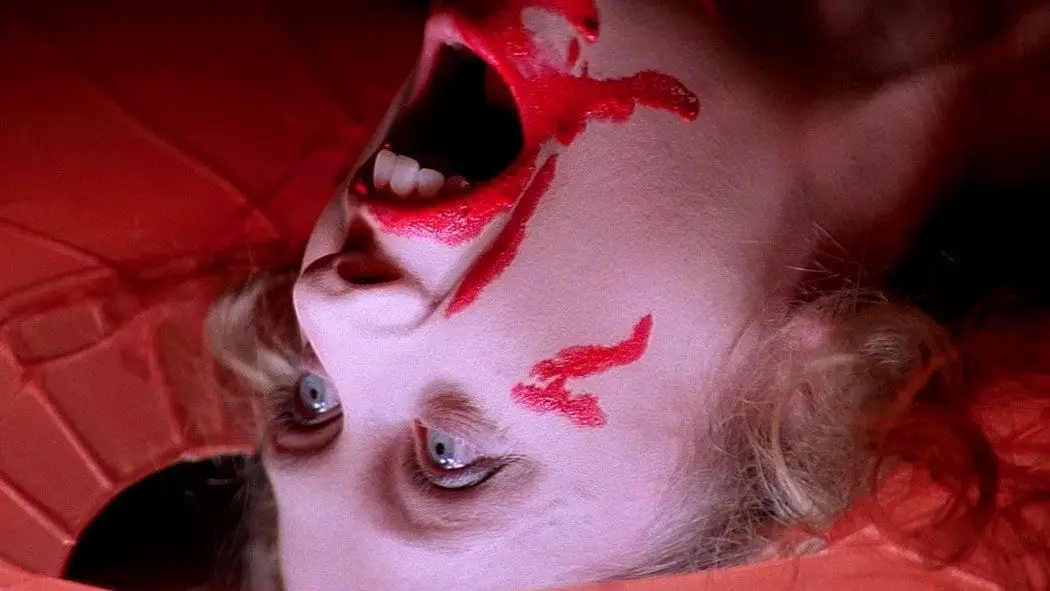
This film is at the center of this list because Suspiria is at the center of the Italian horror genre itself. The film is a masterclass in what can be done with a camera. There isn’t that much dialogue. The script is bare thin. There is barely a plot. The opening sequence is almost dialogue free actually, propelled forward by the insane colors and the driving “witchy” score by progressive rock band Goblin.
Young Susie Bannion (Jessica Harper) shows up to Germany on a windy, rainy night to the school of dance she has just been admitted to for ballet. She sees a hysterical girl running through the woods away from the school as she herself checks in. That girl goes on to get murdered the same night in what is the greatest opening sequence in the history of the horror genre, Italian or otherwise. The colors are the most vibrant things imaginable, which helps to add a surrealistic vibe to the occult-like murders that make them easier to digest. This most definitely is taking place in a different world, one that exists solely inside Dario Argento’s mind.
Unlike the remake, Argento’s classic is very short and barely has a narrative. It jumps from one colorful nightmare to the next and is carried through by the inventive kills and the crazy music that is one of the most unique scores of all time, mixing 70s prog rock with ancient ritualistic cult-like sounds. (I was lucky to attend a live screening of Suspiria last November with Goblin live-scoring the film, and it was amazing to see the film sync up with the music in real time). Truly a master work in aesthetics, Suspiria casts a spell that is wholly unique and entirely a product of the Italian horror genre.
Demons (1985)
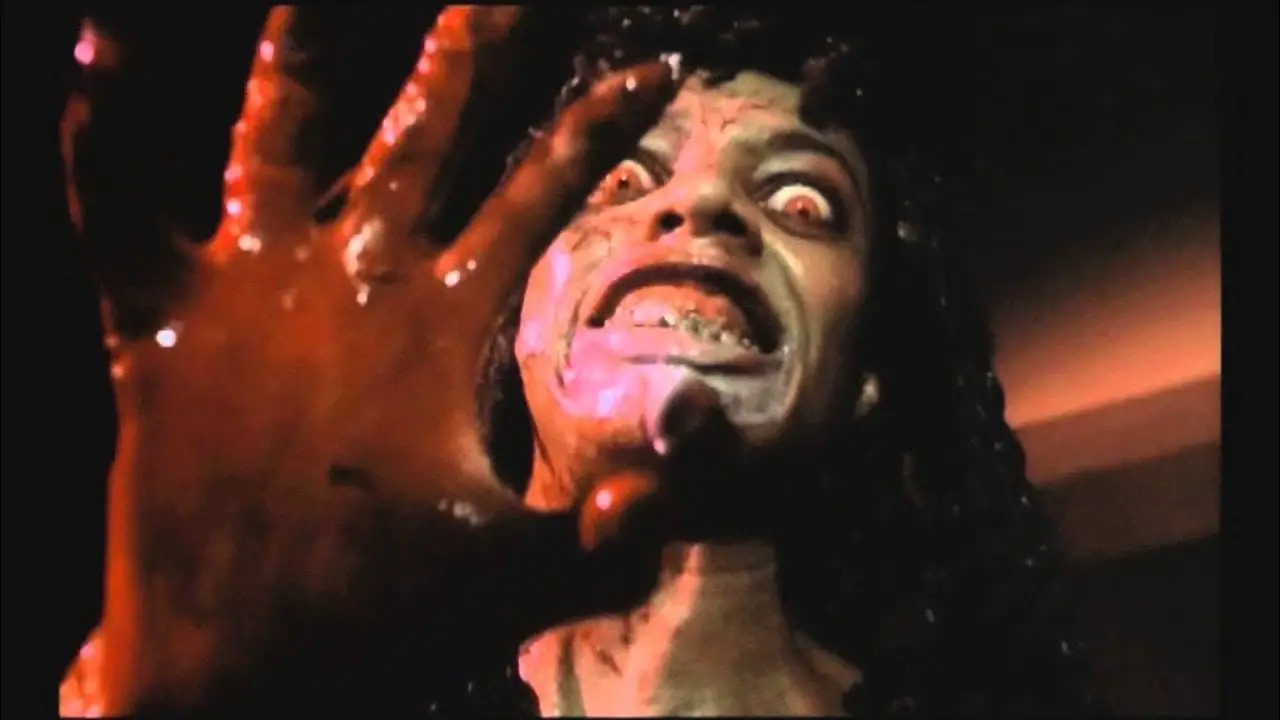
Lamberto Bava, son of Italian horror godfather Mario Bava (Black Sabbath, Black Sunday), blew the brains out of the back of audiences’ skulls with Demons. It had everything that a “monster kid” could want. The film opens with a guy in a cyber-punk version of the Phantom of the Opera costume passing out Willy Wonka inspired golden tickets to a movie screening. The actual movie takes place in a theater overrun by demons from Hell, while another horror film plays out on the screen with people being terrorized by demons from Hell.
There’s a soundtrack full of “New Wave of British Heavy Metal” bands like Saxon and Judas Priest. The effects were absolutely disgusting in the best way. Demons is the kind of movie that can turn someone into a gore-hound. The same Italian horror aesthetic is on full display. The colors are bright and the blood is more red than anything that looks remotely like real blood.
What is it with these Italian horror guys and motorcycles? Michele Soavi may have perfected it, but Lamberto Bava did it first. In one of many memorable moments in Demons, one of the heroes saves a girl from a swarm of demons in the theater and goes ripping through the seats, bobbing and weaving on the motorcycle, slicing demons down with a sword in his free hand. You read that right. He’s doing all the fancy motorcycle maneuvering through the movie theater with one hand. (This should go without saying; just wanted to reiterate.) Demons is a blast of punk rock energy that made its way on to the video nasty list in the ’80s, being banned in many parts of Europe and only growing the film’s reputation. Lamberto surely made his father proud.
The Bird With the Crystal Plumage (1970)
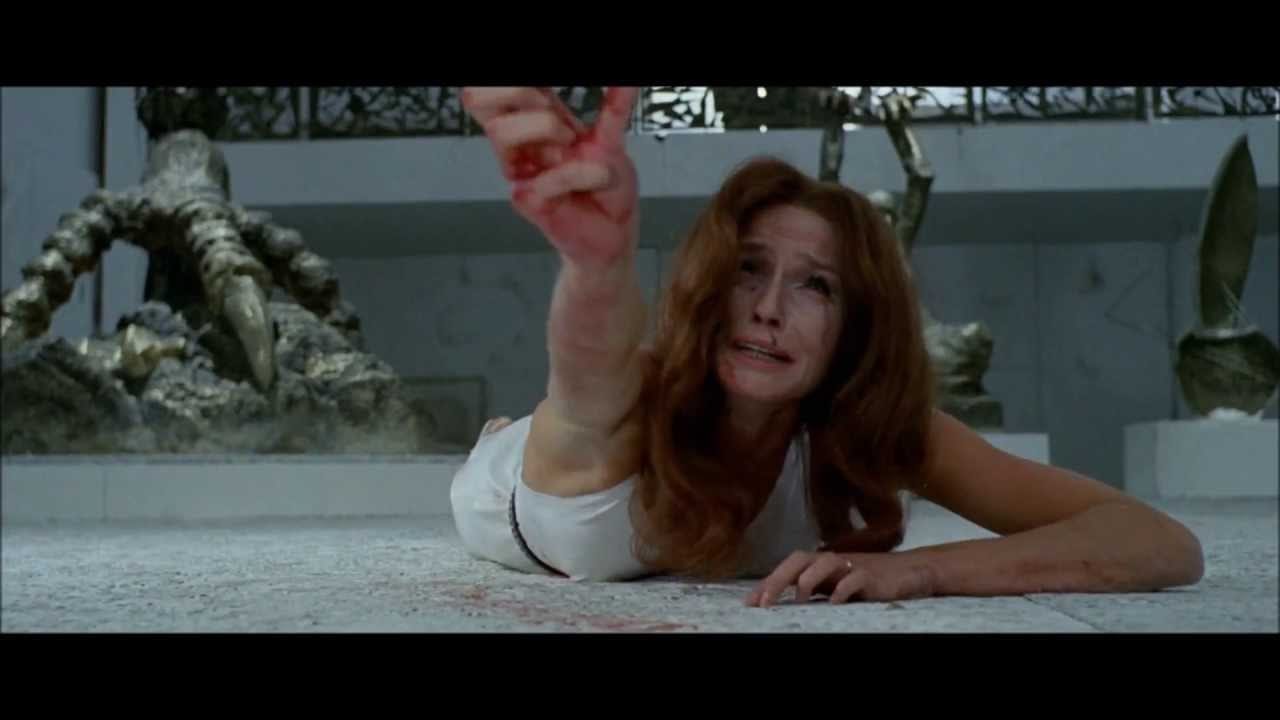
Some are going to read this and immediately cry “but this is a giallo film.” Hold the protests please. It’s a proto-slasher that features horrific kill scenes and was a direct influence on John Carpenter’s Halloween. The overall line between giallo and slasher is so thin it’s more than easy to pretend it was never there to begin with. Crystal Plumage is a film that is many firsts; the first Dario Argento directed feature, the first in his “animal trilogy,” the first of a fully formed cemented giallo film that would set off a nationwide craze lasting well through the ’80s. It is the impetus for the golden age of Italian horror cinema. Like Mario Bava before him, Dario Argento seemed to show up with his own rule-book that others were to follow.
Bird with The Crystal Plumage owed a lot in style to Alfred Hitchcock as well. There’s a black gloved killer on the loose and a witness to an attempted murder has to piece together what he saw to help the Italian police solve the crime. The opening sequence, played over and over in the young American’s head, is cribbed straight from Rear Window.
So what makes this a horror film and not a standard whodunit? The giallo film is characteristically known for having extremely violent kill scenes, a sinister tone, and deals with traumatic repressed memory often as motive. Many of the victims are young attractive women. The POV shots putting audiences firmly in the mind of the killer as they strangle another young woman feel way too visceral for Agatha Christie. These tropes would go on to all influence the American slasher. Mario Bava had made giallo films first, but Dario Argento perfected them.
City of the Living Dead (1980)

If you hang around any horror fanatic long enough you’ll likely have to be subjected to that old chestnut of an argument “who is the Italian horror king: Dario Argento or Lucio Fulci?” It’s a really tired question that suggests artists’ work are supposed to be compared and pitted against each other. Why not just enjoy both as there is plenty to enjoy? If Argento is the master of style than Fulci is the godfather of atmosphere and dread. His films are slimy and disgusting. City of the Living Dead sounds like a George Romero styled zombie film and that couldn’t be further from the truth.
Fulci’s films in general were known to be so damn gory. The effects work In City of the Living Dead is some of the best in the history of Italian horror. A priest commits suicide and opens up a gate to Hell. The dead arise from their graves to feast upon the living. These zombies were different than Romero’s. They were disgusting, maggot-filled piles of mud. You can almost smell the rot from your living room. Frequent Fulci effects collaborator Gino de Rossi went as far as he could go to make the zombies look so realistic…and in this film, realistic is equal to disgusting. It was truly shocking as audiences for the first time saw corpses come back from the dead crawling with live maggots and flesh falling off the bones.
Blood and Black Lace (1964)
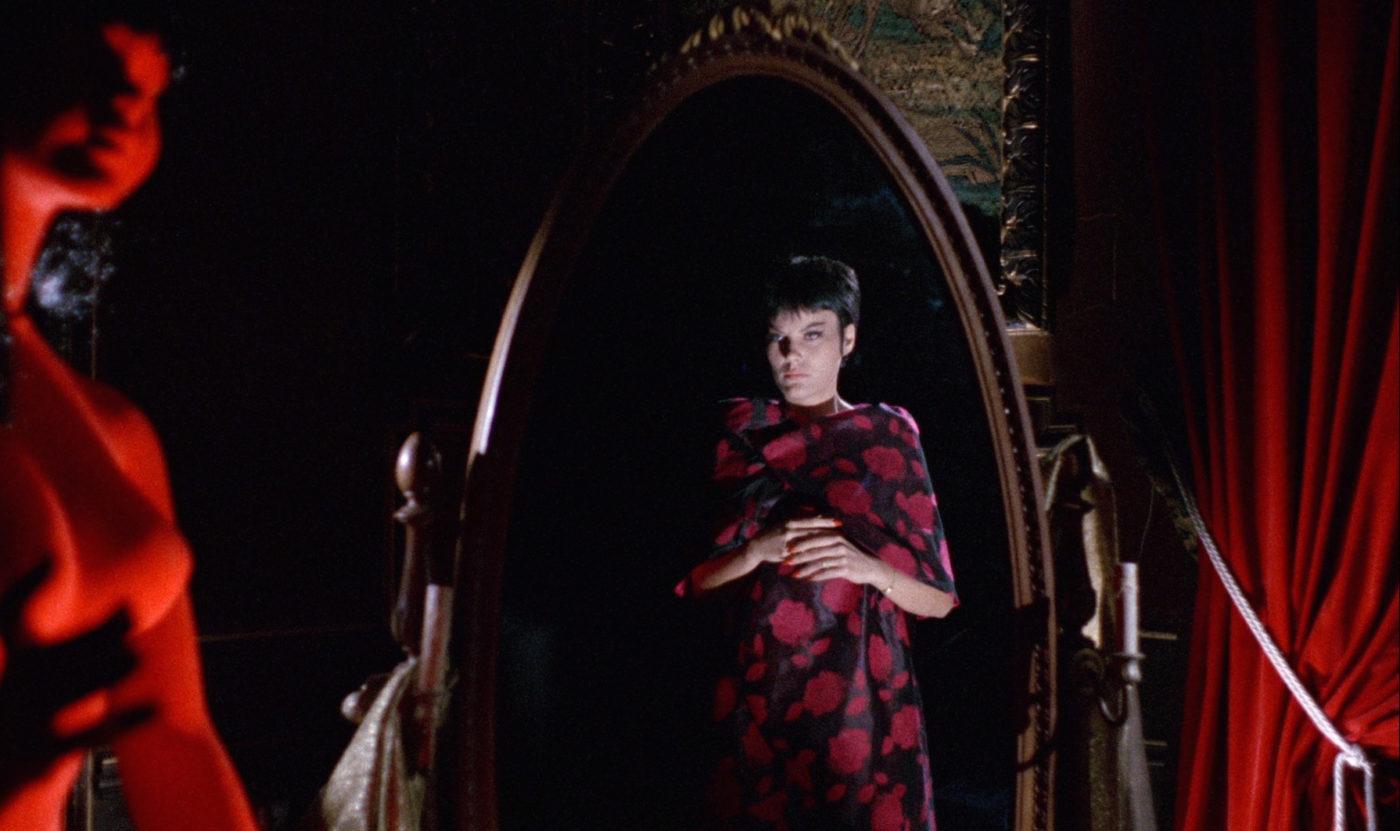
Mario Bava really is the grandfather of the entire Italian horror movement. Without him, none of it would have happened. He kicked open the doors with Black Sunday (1961) and then Black Sabbath two years later. His next film is the proto-giallo, Blood and Black Lace. Much like Argento passed the baton down to Michele Soavi, Mario Bava previously passed that baton down to Argento.
Blood and Black Lace sees several beautiful women in the fashion world murdered by a serial killer in a mask. Blood and Black Lace was one of, if not the, earliest and most influential giallo horror films of all time. Without it, there would be no Dario Argento. The body count in this movie is well past anything any audience had seen up until this point and wouldn’t see again until the golden age of slashers of the 1980s.
There was a certain stylistic flare that Mario Bava put on display with the killings that would become a hallmark of the giallo genre. So many of the victims in all of these films are women in the fashion world, actresses, models. There’s a very voyeuristic quality to this film that the genre as a whole would always be criticized for, but Italian horror could not exist without the giallo. The genre could not exist as it is without Blood and Black Lace.
Inferno (1980)
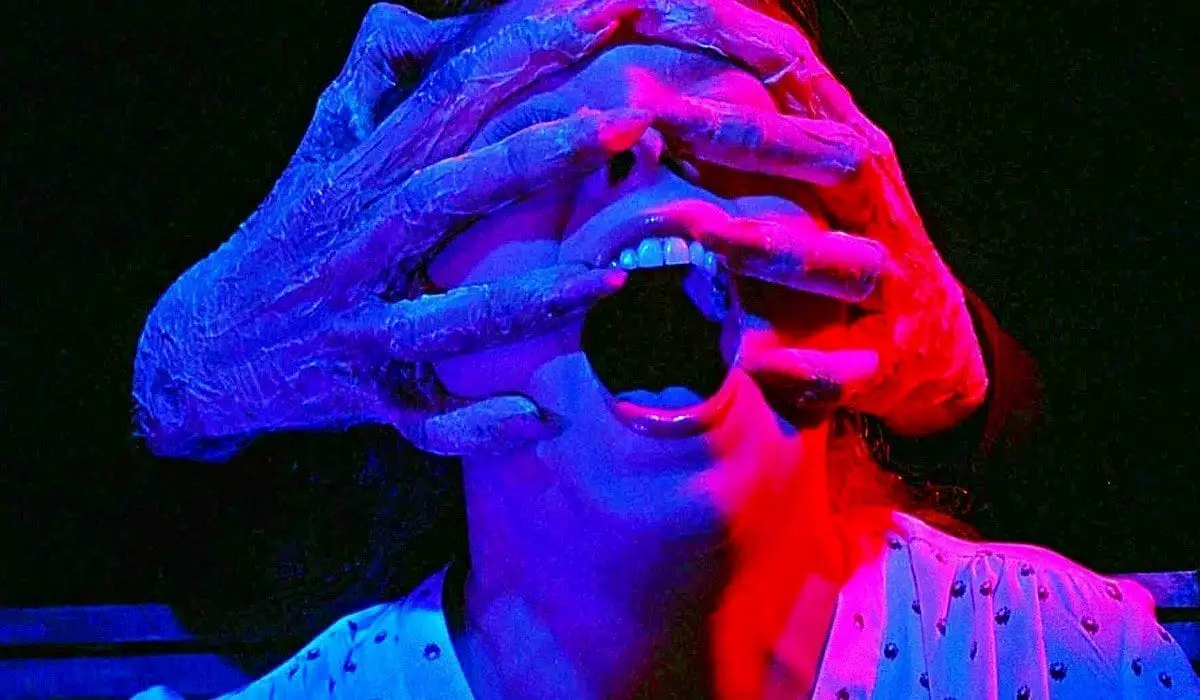
Dario Argento’s sequel to Suspiria and the second film in his “three mothers” trilogy is even more esoteric than its predecessor. If audiences felt that Suspiria was lacking in logic and way more concerned with style than substance, then Inferno was not going to be their cup of tea. Inferno doubled down on the hallucinatory aspects of Suspiria and managed to be less concerned with logic and exposition.
The plot is as simple as Suspiria‘s. A young man investigates the disappearance of his sister and discovers that her apartment building in New York is the center of an ancient coven of black magic practicing witches. As with Argento’s entire body of work, Inferno showed off Argento’s brilliant use of the camera itself and carried the same manic bewitching feeling that propelled the entirety of Suspiria. Though perhaps not quite the masterpiece Suspiria is, Inferno is a worthy sequel that is rich in color, atmosphere, and supernatural horror.
The Beyond (1981)
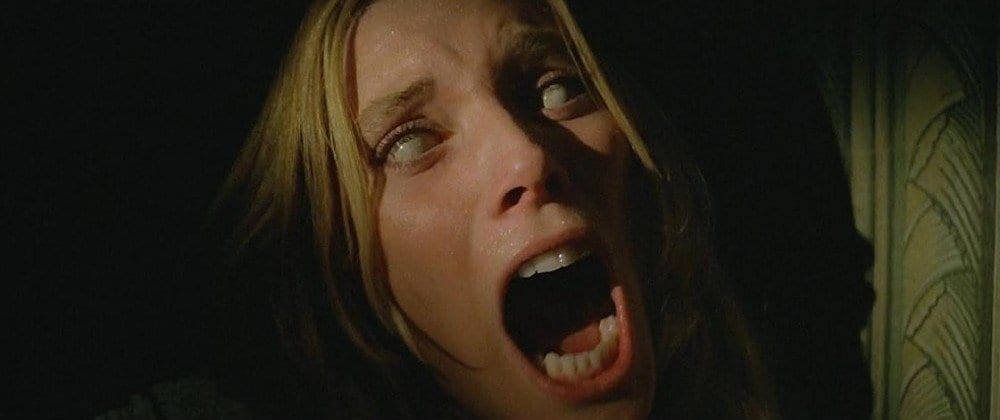
Although Dario Argento was always considered the heavy favorite, it always felt that Fulci never got as much respect outside of the hard core genre community as he deserved. The Beyond is a prime example of why Lucio Fulci should be remembered with Dario Argento and Mario Bava as a true master of Italian horror cinema. The Italians love their thematic trilogies. Dario Argento had two (“three animals” and “three mothers”) so of course Lucio Fulci had to have one of his own: the “gates of hell” trilogy. City of the Living Dead had been the first, followed by The Beyond, and finished off with House by the Cemetery (1981).
Like most of the films on this list, The Beyond isn’t exactly heralded for narrative consistencies. A woman inherits an old plantation home in New Orleans where a graphic murder happened years ago, opening a gate to Hell that she must now contend with. Fulci shot a lot of The Beyond on location in New Orleans, which lent itself to the gothic atmosphere of the film. Other than Suspiria, Fulci’s The Beyond has the best cinematography in any Italian horror film and is way more reminiscent of early Mario Bava masterworks than anything that Dario Argento was doing at the time.
Epilogue
With so many great films in the wide sub-genre that makes up the world of Italian horror cinema, there will be many that will read this and wonder where this film is or that director. This list is a subjective gathering, not a ranking. It’s not an argument that these films are more deserving over the many other classic horror films and directors from Italy.
Films from the likes of Dario Argento, Lucio Fulci, and Michele Soavi showed audiences how stylish horror could be when handled correctly. The hallucinatory surrealism combined with the bright, bombastic colors opened up a whole world of visual stimulation and a sinister tone that is wholly unique. Proto- slashers, giallos, and supernatural tales of witches, black magic, and the devil all told through a distinct, idiosyncratic voice. Long live Italian horror!


